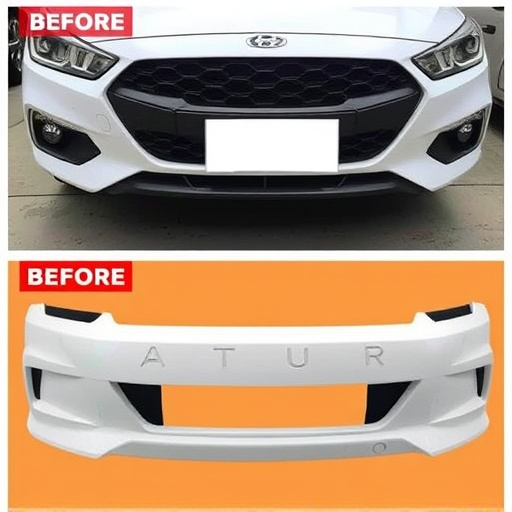Professional Frame Straightening Service: Essential Post-Accident Repair

Post-accident, hidden frame damage can compromise safety. Frame straightening service uses specializ…….
Welcome to an in-depth exploration of the vital industry known as frame straightening service. In today’s fast-paced world, where structures face various challenges from environmental forces and human activity, ensuring structural integrity is paramount. Frame straightening services play a critical role in maintaining and restoring the alignment and stability of buildings, bridges, and other constructions, safeguarding lives and investments alike. This article aims to provide an extensive guide, delving into every facet of this essential service, from its foundational concepts to future prospects. By the end, readers will grasp the global impact, technological innovations, and the crucial policies shaping this dynamic industry.
Definition: Frame straightening service refers to a specialized set of practices and technologies employed to realign and stabilize structural frames, primarily in buildings and bridges. It involves assessing, correcting, and preventing deformations in these structures’ load-bearing components, ensuring their safety and longevity.
Core Components:
Structural Assessment: The initial step involves thorough inspection and analysis of the existing structure using advanced diagnostic tools and techniques. This includes identifying any misalignments, stress points, or signs of damage.
Deformation Analysis: Experts calculate and visualize frame deformations, often employing 3D modeling software to simulate precise representations of the structure’s current state.
Correction Techniques: Depending on the severity and type of deformation, various methods are employed:
Prevention Strategies: To avoid future issues, professionals implement preventive measures such as regular maintenance programs, advanced monitoring systems, and design modifications to enhance structural resilience.
Historical Context: The concept of frame straightening has evolved over centuries, driven by increasing architectural complexity and the need for safer structures. Early methods focused on manual adjustments and traditional repair techniques. However, advancements in engineering science and technology have led to more sophisticated and precise approaches, ensuring faster and more effective results.
Frame straightening services are a global phenomenon, with demand driven by diverse factors:
| Region | Key Drivers | Notable Trends |
|---|---|---|
| North America | High-rise construction boom, stringent safety regulations | Preemptive maintenance programs, use of advanced monitoring systems |
| Europe | Strict historical building preservation laws, post-war reconstruction | Sustainable restoration practices, innovative bracing techniques |
| Asia Pacific | Rapid urbanization, massive infrastructure projects | 3D modeling and printing for precise repairs, digital twin technology |
| Middle East | Iconic architectural marvels, extreme weather conditions | Robotic assistance, smart sensors for real-time monitoring |
| Latin America | Natural disaster resilience, government initiatives for structural safety | Community-based maintenance programs, traditional techniques with modern tools |
These trends reflect the dynamic nature of the industry, as regions adapt to unique challenges and embrace technological advancements.
The frame straightening service market is a significant contributor to global construction and engineering activities, with varying economic dynamics across regions:
Market Size: According to a 2022 report by ResearchAndMarkets, the global structural repair market (including frame straightening) is projected to reach $43.5 billion by 2027, growing at a CAGR of 6.2%.
Investment Patterns: Governments worldwide allocate substantial funds for infrastructure maintenance and rehabilitation, driving investment in frame straightening services. Private sector participation also increases, particularly in urban areas with high real estate values.
Economic Impact: The industry creates numerous job opportunities, from skilled laborers to highly specialized engineers. It contributes to local economies through direct employment and the supply chain effects of supporting materials and technologies.
Technology has been a game-changer in frame straightening services, enhancing efficiency, precision, and safety:
3D Modeling and Simulation: Advanced 3D modeling software allows engineers to create digital twins of structures, enabling detailed analysis and visualization. This technology aids in planning complex corrections and predicting structural behavior under various conditions.
Drone Inspection: Drones equipped with high-resolution cameras and sensors provide aerial inspection capabilities, reaching hard-to-access areas and capturing comprehensive data for structural assessments.
Robotic Assistance: Robots are deployed for tasks like welding, jacking, and precise material removal, increasing efficiency and reducing human risk in hazardous operations.
Smart Sensors and IoT: Internet of Things (IoT) devices monitor structural health in real time, providing early warnings for potential issues and enabling proactive maintenance.
Governments worldwide have recognized the critical role of frame straightening services in ensuring public safety and preserving heritage:
Building Codes: Most countries enforce strict building codes that dictate structural integrity requirements, including provisions for regular inspections and maintenance, especially in high-risk areas.
Historical Preservation: Many nations have laws protecting historic structures, influencing frame straightening practices to ensure the preservation of architectural heritage while addressing safety concerns.
Insurance and Liability: Insurance policies often cover structural damage and may require evidence of regular maintenance and inspections to minimize claims. This creates a financial incentive for businesses and homeowners to invest in proactive frame straightening.
Despite its numerous benefits, the frame straightening service industry faces several challenges:
Cost and Funding: Complex structural corrections can be expensive, often requiring significant investments from property owners or government bodies. Securing funding for maintenance, especially in underdeveloped areas, remains a challenge.
Accessibility: Reaching structures in remote or confined spaces can hinder efficient frame straightening, increasing costs and complexity.
Regulatory Compliance: Keeping up with evolving building codes and standards across jurisdictions is a bureaucratic task, often requiring extensive documentation and coordination.
Proposed Solutions:
Public-Private Partnerships: Collaboration between governments and private sector entities can leverage resources and expertise, making frame straightening more accessible and affordable.
Digitalization of Records: Implementing digital platforms for structural data management streamlines regulatory compliance and facilitates knowledge sharing among professionals.
Incentive Programs: Governments can offer tax incentives or subsidies to encourage regular maintenance, especially in underserved communities.
The historic Grand Cathedral faced severe structural degradation due to poor maintenance and a major earthquake in the 1980s. Russian engineers utilized advanced 3D modeling to map the cathedral’s internal structure, enabling them to perform precise frame straightening operations without compromising its architectural integrity. This successful restoration became a benchmark for future heritage preservation projects.
Regular frame straightening inspections and corrective actions have extended the life of this iconic bridge, addressing issues like corrosion and seismic activity. Modern technologies like drone inspections and smart sensors ensure continuous monitoring, allowing engineers to make data-driven decisions for maintenance and repairs.
In dense urban centers across Asia, frame straightening services are essential to maintain the integrity of high-rise buildings. Advanced bracing systems and regular maintenance programs have significantly reduced incidents of structural failure, ensuring safety for residents and businesses alike.
The frame straightening service industry is poised for growth and innovation:
Emerging Markets: With rapid urbanization in Africa, South America, and parts of Asia, there’s a growing need for frame straightening expertise to support the construction boom in these regions.
Sustainable Practices: The industry will increasingly focus on environmentally friendly methods, recycling materials, and adopting green technologies to minimize the structural repair footprint.
Digital Transformation: AI and machine learning algorithms will play a larger role in predictive maintenance, automated data analysis, and personalized corrective strategies.
Collaboration and Knowledge Sharing: Global networks of professionals and institutions will foster knowledge exchange, leading to improved best practices and innovative solutions.
Frame straightening services are an indispensable component of modern construction and engineering, ensuring the safety and longevity of structures worldwide. From historical landmarks to towering skyscrapers, this industry’s expertise is crucial in navigating the challenges posed by environmental factors, human activity, and the relentless march of time. As technology advances and global collaboration deepens, frame straightening will continue to evolve, offering innovative solutions while preserving our built environment for future generations.
Q: How often should a building undergo frame straightening inspection?
A: Recommendations vary, but it’s advisable to inspect older buildings or those in seismic-active zones annually, and every 3-5 years for newer structures. Regular maintenance is key to preventing costly repairs.
Q: Can frame straightening services restore a structure to its original state?
A: Yes, with careful planning and advanced techniques, it’s possible to realign frames and return structures to their initial alignment, though this may involve significant investment.
Q: Are there eco-friendly options for frame straightening?
A: Absolutely! Using recycled materials, green adhesives, and energy-efficient technologies can make frame straightening more sustainable, reducing the environmental impact of structural repairs.
Q: How do I know if my building needs frame straightening?
A: Signs may include noticeable misalignments, uneven floors or walls, doors/windows that stick or don’t close properly, and visible cracks in load-bearing elements. Professional inspections are crucial for accurate assessments.

Post-accident, hidden frame damage can compromise safety. Frame straightening service uses specializ…….

Frame straightening service technicians in automotive restoration play a vital role, ensuring vehicl…….

Crash-related vehicle repairs require professional frame straightening services to ensure structural…….

Specialized tools like metal forming machines, 3D laser scanners, hand tools, and hydro-mechanical l…….

Car accidents can cause significant frame damage, impacting safety and performance. Frame straighten…….

Frame straightening services offer a cost-effective and sustainable solution for damaged car frames,…….

Car accidents cause significant structural damage, requiring a frame straightening service to restor…….

Frame straightening service is a specialized auto body repair process that corrects and realigns dam…….

A frame straightening service is a specialized automotive repair that corrects vehicle frame damage,…….